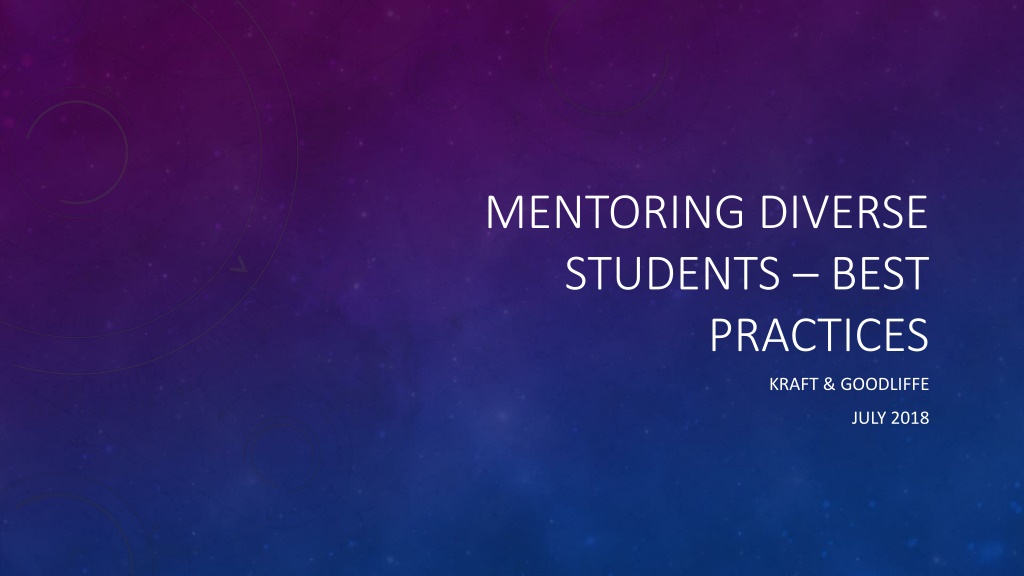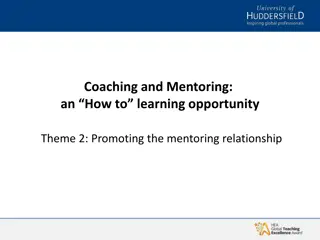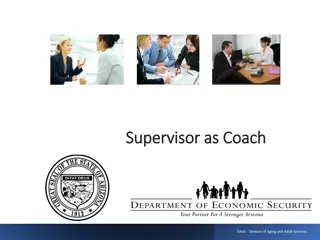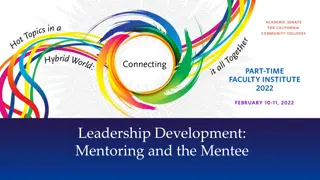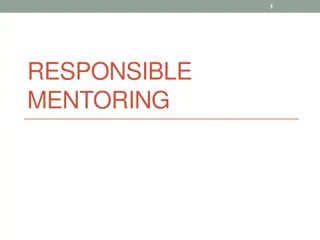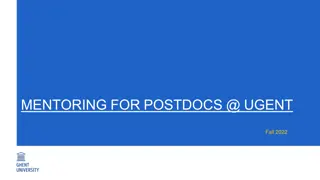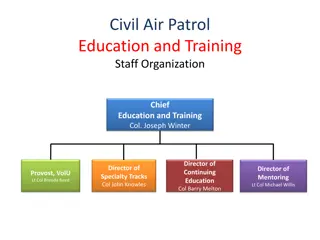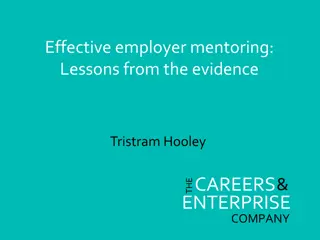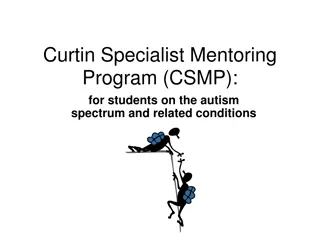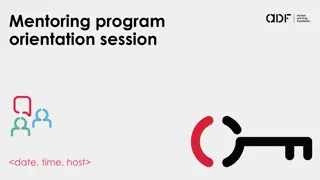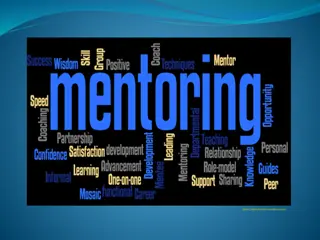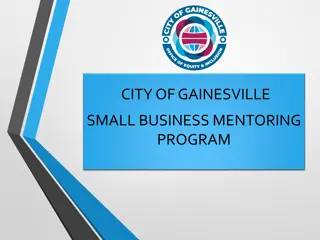Mentoring Diverse Students: Best Practices and Challenges
Explore the world of mentoring diverse students through best practices, understanding challenges faced, and the importance of creating an inclusive and welcoming environment. Discover the impact of mentoring on retention and factors influencing it, along with the significance of peer networks in the mentorship process.
Download Presentation

Please find below an Image/Link to download the presentation.
The content on the website is provided AS IS for your information and personal use only. It may not be sold, licensed, or shared on other websites without obtaining consent from the author.If you encounter any issues during the download, it is possible that the publisher has removed the file from their server.
You are allowed to download the files provided on this website for personal or commercial use, subject to the condition that they are used lawfully. All files are the property of their respective owners.
The content on the website is provided AS IS for your information and personal use only. It may not be sold, licensed, or shared on other websites without obtaining consent from the author.
E N D
Presentation Transcript
MENTORING DIVERSE STUDENTS BEST PRACTICES KRAFT & GOODLIFFE JULY 2018
WHAT DO WE GAIN BY MENTORING A DIVERSE & INCLUSIVE GROUP OF STUDENTS? From Bernard & Cooperdock (2018)
EFFECTIVE MENTORING INVOLVES UNDERSTANDING STUDENT S IDENTITIES, COMMUNITIES, AND GOALS First generation? Underrepresented? Women in STEM?
WHAT IMPACTS WHO WE ARE, WHAT WE SEE, AND WHAT MAKES US FEEL INCLUDED? http://web.jhu.edu/dlc/resources/diversity_wheel/
YOU HAVE RECRUITED STUDENTS FROM A DIVERSE ARRAY OF BACKGROUNDS. NOW, HOW TO MAKE SURE THEY FEEL WELCOME, SUCCESSFUL, VALUED AND MENTORED!
MENTORING IS ALL ABOUT RETENTION There just came a day when I had to ask myself, Why am I here? Is it worth it? Hardly anyone talks to me. I know most of them (student and teachers) don t think I m as smart as they are. They don t think I earned my place here. Maybe they don t even like me. Do I have to take this crap? (Johnson-Bailey, 2004)
FACTORS THAT INFLUENCE RETENTION Negative classroom interactions Family responsibilities Insensitive institutional atmosphere Class schedule Support structures centered on traditional students Apathetic advisor
IMPORTANCE OF A PEER NETWORK Mentoring is NOT just about the faculty-student relationship
IMPLICIT BIAS Watch: Alan Alda as part of a Scientific American Video: https://youtu.be/3Nj-MjBc-xQ
TAKE THE IMPLICIT BIAS TEST TO LEARN MORE! https://implicit.harvard. edu/implicit/ A very important outcome of this research biases are plastic and can be remodeled, with work
VALUE OF MENTORING IN ADVANCING DIVERSITY IN SCIENCE In a recent study of leadership in the medical field, it was found that metrics of success correlated well to opportunities provided by a mentor/ sponsor (Patton et al., 2017) For both men and women in academic medicine, being sponsored was associated with success defined by typical metrics emphasized in the academic promotions process, like publications, grants, and leadership positions. Men reported higher levels of mentoring/sponsorship "Equity vs. Equality" by MPCA is licensed under CC BY-NC 2.0
VALUE OF MENTORING IN ADVANCING DIVERSITY IN SCIENCE Another study: tracked women Economists for 3-5 years who were either in a structured mentoring program or a control group . The study found significant gains for those who received mentoring in: total number of publications, publications in "top tier" journals, and number of federal grants awarded. (Blau et al., 2010)
BEST PRACTICES IN MENTORING FOR DIVERSITY Consider, and accommodate, needs of family (family-friendly policies) Offer additional mentoring or opportunities that give students a step ahead Summer research experiences Connect students with campus-wide resources or programs for diversity Discuss challenges that face diverse groups Imposter syndrome Implicit bias and stereotype threat Encourage strong building of networks Connect to other scholars & mentors Pair newer and more advanced students together Provide support for attendance to diverse meetings (e.g., SACNAS) Provide support for membership to National Center for Faculty Diversity & Development
BEST PRACTICES IN MENTORING FOR DIVERSITY Carefully consider language you use in letters of recommendation Consider how your research, teaching, or activities may exclude students of differing abilities, financial stability, or backgrounds (do a self-assessment) Bolster the feeling of belonging Consider the messages you send in your own language, room d cor, discussion facilitation Acknowledge that school (undergraduate, graduate) can be challenging to students from all backgrounds Assess your expectations and your student s expectations about mentoring
CONNECTIONS TO OTHER TOPICS/SESSIONS Safety in the field Campus resources for sexual harassment and mental health Others?
WHEN IS MENTORING IMPORTANT? (TESSA Posted this question on Twitter) A suite of responses, including: In early stages of scientific career when students are trying to make decisions about their future During transition phases from one step to another Dealing with harassment or negative academic culture When trying to juggle family/life responsibilities with career When seeking advice on challenges in this career
BEST PRACTICES ARE COMPILED FROM A VARIETY OF SOURCES: https://www.princeton.edu/reports/2013/diversity/report/PU-report-best-practices-graduate- students.pdf https://www.scientificamerican.com/article/3-myths-plus-a-few-best-practices-for-achieving-diversity/ https://www.slideshare.net/utepgrad/mentoring-diverse-students http://tomforth.co.uk/genderbias/ http://www.theiagd.org/research-literature/ https://implicit.harvard.edu/implicit/ http://web.jhu.edu/dlc/resources/diversity_wheel/
